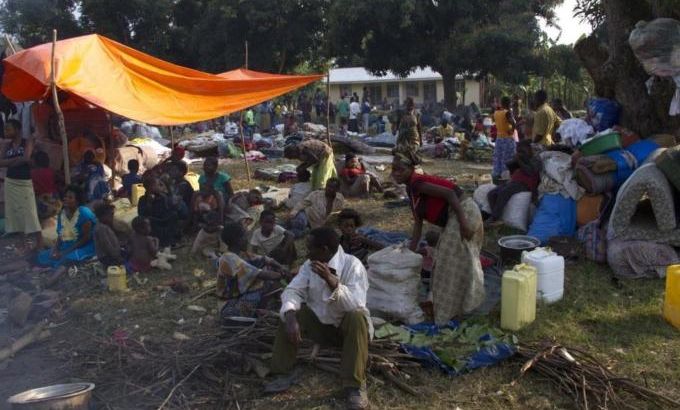Congolese influx to Uganda reaches 60,000
Aid agencies struggle to cope as refugee numbers grow after surprise rebel attack in Democratic Republic of Congo.

At least 60,000 refugees from the eastern Democratic Republic of Congo (DRC) have now arrived in neighbouring Uganda after fleeing a rebel attack on a town near the border, Red Cross officials said.
Catherine Ntabadde of the Uganda Red Cross said on Sunday that her organisation had already registered 41,000 refugees and that 20,000 more were waiting for registration.
The numbers show a dramatic rise from earlier estimates and due to the fact the rebel attack was a surprise, the influx is stretching humanitarian capacities.
“Given such numbers there is need for urgent humanitarian assistance, as some of the refugees are sick and have left all their belongings in Congo,” said Ntabadde.
The refugee influx is continuing three days after the Ugandan rebel group, the Allied Democratic Forces (ADF), attacked Kamango town, killing a number of people and briefly occupying it, according to Ugandan military officials.
Refugees have streamed across the border into western Uganda’s Bundibugyo district since then, though the numbers of new arrivals crossing on Sunday had slowed to a trickle.
“Many new arrivals are also reported to be staying in the community,” United Nations refugee agency official Karen Ringuette said.
Transit camp
Thousands crowded into the grounds of schools in Bundibugyo – about 20km from the border with the DRC – offered as a temporary shelter, with many building makeshift shelters or simply sleeping out in the open.
|
|
| Al Jazeera’s Malcolm Webb reports from Kamango |
The Red Cross is working with the UN and other aid agencies to set up a camp further inside Uganda, although many refugees appeared reluctant to leave.
“The [Ugandan] government has found a transit camp eight kilometres from Bundibugyo town … There we can start registering them afresh,” Ntabadde said.
However, an AFP photographer said that long lines of refugees crossing into Uganda had declined, and that large crowds were waiting to return to DRC.
Ugandan police were encouraging people to move to the new camp, refugees said.
The ADF was formed in the mid-1990s in the Rwenzori mountains in western Uganda, close to the DRC border and was pushed deeper into the jungles of DRC after a Ugandan military offensive in 2001.
It has been relatively quiet in recent years, and it was not immediately clear what led to the ADF attack on Kamango.